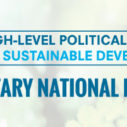
Search
Beyond GDP: Bhutan’s pursuit of wellbeing and happiness revealed in latest GNH results

22 May 2023 – The Prime Minister of Bhutan, Dr Lotay Tshering, launched the 2022 Gross National Happiness (GNH) Index for Bhutan today. The GNH Index measures the population’s overall wellbeing and happiness across nine domains. Addresses were also offered by researchers at Centre for Bhutan and GNH Studies that led the work, as well as Achim Steiner (Administrator, UNDP), Mathias Cormann (Director General, OECD), who profiled the timely relevance of this study on the international stage.
The book GNH 2022 launched today finds that from 2015 to 2022 Bhutan GNH grew strongly, reflecting Bhutan’s steadfast commitment to fostering environment conducive to holistic happiness and wellbeing even through the COVID-19 pandemic.
Bhutan’s GNH Index in 2022 is 0.781, which grew by 3.3% compared to 2015, when it was 0.756. The GNH Index ranges from 0-1 with 1 being the happiest. In 2010 its value was 0.743.
The GNH Index is a holistic tool based on 33 indicators which measure nine domains: psychological wellbeing; health; education; time use; cultural diversity and resilience; good governance; community vitality; ecological diversity and resilience; and living standards. The Index is constructed using the Alkire-Foster method – which is a rigorous yet easy-to-understand method.
The GNH Index classifies each person into one of four groups depending on the share of weighted indicators in which they enjoy sufficiency: Deeply happy (77% to 100%), Extensively happy (66% to 76.9%), Narrowly happy (50% to 65.9%) and Unhappy (0% to 49.9%). In 2022, 9.5% of the population is deeply happy, 38.6% extensively happy, 45.5% narrowly happy, and 6.4% unhappy.
The combined share of deeply or extensively happy individuals increased by 7.2 percentage points from 2010 to 2022 (40.9% in 2010 to 48.1% in 2022). These two groups are referred to has ‘happy’ because they are assumed to have the causes and conditions of well-being. Policy attention focuses on the unhappy and narrowly happy (together called not-yet-happy).
The findings challenge the assumption of a strong association between income and happiness. If all Bhutanese are divided into five groups according to their income, 41% of richest quintile are in the not-yet-happy, and 44% of the ‘next richest’ quintile were also in that group. In the poorest income group, 29.2% of people were extensively or deeply happy, and in the next-poorest, it’s 42%. So clearly income and GNH are different measures.
Different people fashion their participation in the nine domains of GNH differently, depending on their possibilities and personal goals – which is vital for freedom and diversity. Consider Karma Lhadon, a 70-year-old woman, enjoys sufficiency in 71% the 33 indicators. An illiterate farmer and widow, she is healthy, highly spiritual, and lives in vibrant community. She is income poor, and monkey and boar frequently destroy her crops – and cause her negative emotions! Yet her life is marked by a strong sense of positivity as well as pride in her six children. Drawing on data and qualitative studies, the book illustrates other typical personas of happiness – varying by age, gender, geographic area and level of education.
Who is happiest? Although 57 percent of happy people (deeply happy and extensively happy) live in rural areas, urban populations experience significantly higher levels of GNH (0.790 vs 0.726).
By gender, although GNH has increased steadily for both males and females since 2010, females’ GNH grew faster in each period, indicating equalising changes. But females still have lower GNH than males.
While the GNH Index is the national product of Bhutan, it is increasingly relevant abroad also.
James Foster, the Oliver T. Carr Professor at George Washington University, stated, ‘There are times in history when concepts and tools which have been swirling around for some time in public discourse, come into focus and bring change. In my view, the 2022 Gross National Happiness Index of Bhutan is being launched at one such time.’
Mathias Cormann, the Secretary General of the Organisation for Economic Co-operation and Development (OECD), mentioned that, ‘Just last week, G7 Finance Ministers agreed on the need to use multidimensional indicators to measure welfare and integrate those indicators into the policy making process, helping to deliver better policies for better lives.’
Finally, Achim Steiner, the Under-Secretary-General of the United Nations and UNDP Administrator, observed that ‘The UN Secretary-General has elevated ‘Beyond GDP’ as one of the central reform agenda items for the Summit of the Future in 2024. Bhutan’s GNH approach serves as a key example of alternative approaches as the UN works to advance the global conversation in this vital area.’
The 2022 GNH Index findings are published in an extensive book entitled GNH 2022. This book provides detailed insights into the measurements, analysis, and policy implications of the GNH Index for the year 2022 and covers changes in happiness across time.
The lead author of this study, Dasho Karma Ura, the President of the Centre for Bhutan and GNH studies in the Royal Government of Bhutan, was recently a Visiting Fellow at OPHI, under the Public Policy Challenge Fund award. Under his leadership, OPHI had the immense privilege to participate in a small way in this intriguing study. The 2022 GNH Index Survey was also supported by the Japan International Cooperation Agency (JICA) Bhutan Office.

For more information
Download Gross National Happiness (GNH) 2022
Learn more about Gross National Happiness
Download CBS press release
Source: OPHI
















